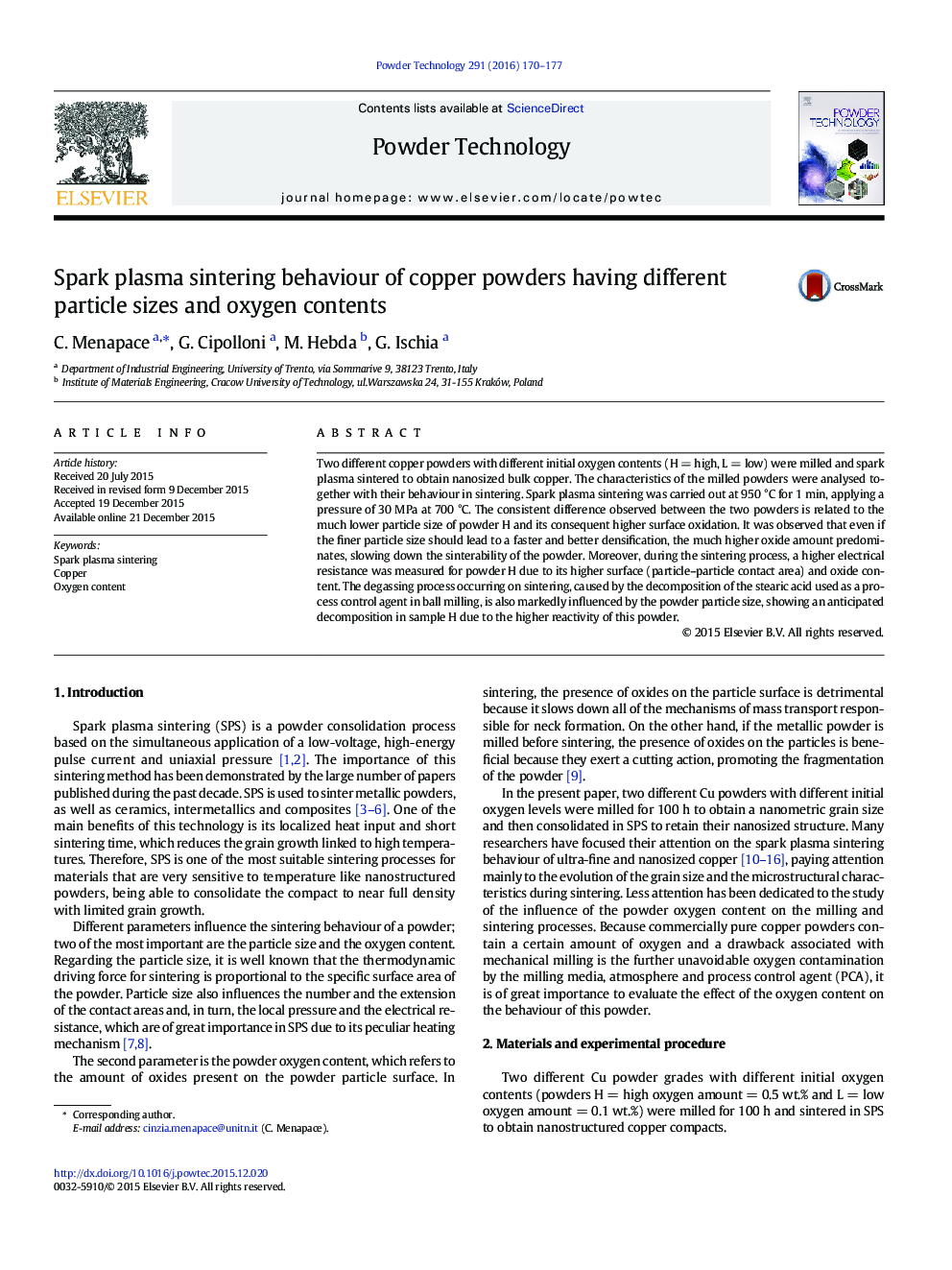| Article ID | Journal | Published Year | Pages | File Type |
|---|---|---|---|---|
| 235005 | Powder Technology | 2016 | 8 Pages |
•Two copper powders with different oxygen contents were compared.•Different behaviour in ball milling and in SPS of two Cu powders was studied.•Analysis of SPS parameters: current, electrical resistance, and pressure chamber.
Two different copper powders with different initial oxygen contents (H = high, L = low) were milled and spark plasma sintered to obtain nanosized bulk copper. The characteristics of the milled powders were analysed together with their behaviour in sintering. Spark plasma sintering was carried out at 950 °C for 1 min, applying a pressure of 30 MPa at 700 °C. The consistent difference observed between the two powders is related to the much lower particle size of powder H and its consequent higher surface oxidation. It was observed that even if the finer particle size should lead to a faster and better densification, the much higher oxide amount predominates, slowing down the sinterability of the powder. Moreover, during the sintering process, a higher electrical resistance was measured for powder H due to its higher surface (particle–particle contact area) and oxide content. The degassing process occurring on sintering, caused by the decomposition of the stearic acid used as a process control agent in ball milling, is also markedly influenced by the powder particle size, showing an anticipated decomposition in sample H due to the higher reactivity of this powder.
Graphical abstractFigure optionsDownload full-size imageDownload as PowerPoint slide
